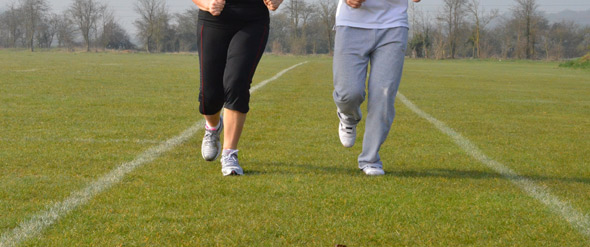Ready To Run: By Dr. Mark Nimchuk
Over the last 16 weeks, I have been fortunate enough to help guide and instruct a group of dedicated local runners in preparation for a marathon that took place last week. Along with the actual training the group did, 3 times a week, we have also been blessed with a line-up of expert speakers that helped educate us on strength training, yoga, mental preparation and of course, race nutrition.
Proper levels of hydration and nutrition before and during a strenuous bout of exercise can literally make or break that session for you. Lets take a closer look at hydration (actual food intake is another whole column altogether)! How much is too much, and how much is too little? Unfortunately there is not an exact formula that covers everyone. Differences in body size, perspiration levels, exertion levels, and personal preferences on what to consume when, all play an important factor in determining what is right for you.
Prior to exercise, a person should be well hydrated. An easy way to determine this is the colour of your urine. Clear urine is indicative of a well hydrated person. You should also have to go to the bathroom right before the activity (see the line-ups before a race!). If your urine is darker in colour, you are likely dehydrated. For a ½ or full marathon distance, runners will start to consciously hydrate up to 2 days before the race.
During any exercise session that is greater than 30-45 minutes or is completed in hotter conditions, some fluid replacement should be used. Without fluid replacement, a person runs the risk of dehydration.Not only will this lead to symptoms such as muscle cramping, fatigue, increased core temperature and decreased performance, it is also potentially dangerous. Once the digestion symptom decreases in function, (as it does during exercise) a person may not be able to rehydrate orally. This has happened to me on occasion and I required an intravenous fluid replacement because I could not keep water or electrolytes down. This can be a dangerous situation due to the headaches, nausea and cramping that occurs. Someone in this situation may need to go to the hospital to get rehydrated.
At the other end of the spectrum is the lesser known, but probably more prevalent Hyponatremia. Hyponatremia occurs when a person drinks too much water or fluid and drops their blood sodium levels to abnormally low levels. Some research has indicated that almost 50% of runners may be consuming too much water. We recommend drinking fluids only when thirsty during your event to maintain appropriate levels.
So what to do? While there are no exact measurements to offer, here are some guidelines about how to keep ideally hydrated before and during a race:
Before an event be sure to hydrate for 1-2 days prior. Carrying a water bottle with you is a good idea. You should be going to the bathroom lots! Playing catch-up immediately before an event can lead to stomach upset and require bathroom trips during the race which obviously isn’t ideal.
Incorporating some electrolyte replacement prior to an event is also a good idea. The choice of what type is very individual and you should not be trying something brand new during the event. No need to overdo electrolytes before the event, 1-2 bottles over the 24-36 hours should suffice.
As stated above, listen to your body during the event. In hotter events you will need to drink more, however keep your intake steady and try not to force down too much at once. For events lasting longer than 45-60 minutes, electrolyte replacement should be used along with some water intake. Also, you may want to consider some nutrition at about this point as well (gels, chews, bars, and lower fibre fruit).
Fluid should be ingested at the approximate sweating rate and not more. Weight should not increase during exercise.
Know ahead of time what electrolyte drink the race will be serving at aid stations. Most times this is posted on the race website. For the Okanagan race this information can be found here. If you do not want to carry your own bottle, try it out beforehand to ensure it agrees with you.
It is a good idea to keep a log of what happened during your race and how you felt. This will help you to determine what works for you. Much of it is trial and error. Even the best distance athletes will struggle with hydration and nutrition problems during races from time to time.
Thanks and have a healthy day!

